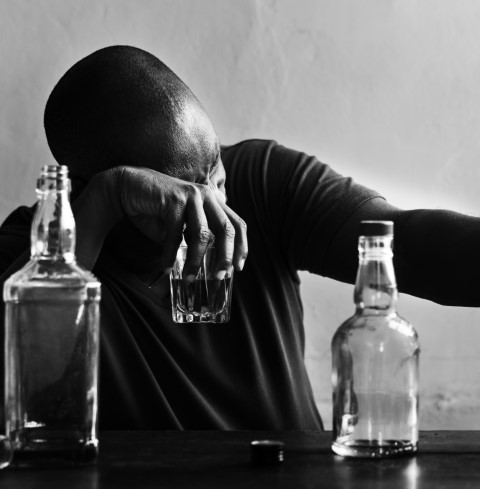 What it is:
What it is:
- Series of evidence-based interventions that individuals with substance use disorders undergo.
- Encompasses various therapeutic techniques, medical care, and support services.
- Involves a combination of behavioural therapies, support groups, life skills training, and medical interventions.
- Comprehensive and bespoke approach, depending on the severity of the addiction and the patient’s specific needs.
And Is Designed To:
- Address the physical, psychological, and social aspects of addiction and recovery.
- Help individuals gain insight into their addiction, and develop coping skills via programmes like Alcoholics Anonymous to prevent relapse.
- Promote meaningful and lasting recovery by improving the quality of life.
Types of Primary Addiction Treatment Processes
Primary refers to the initial stage of rehabilitation for people with AUD (Alcohol Use Disorder) or SUD (Substance Use Disorder). This is the first in several levels of care involving a range of modalities aimed at helping individuals overcome their substance use disorder and initiate their journey to recovery. There are different types of primary treatment processes available, including inpatient and outpatient programs, medically managed detoxification and talking therapies.
Substance abuse treatment programs are mostly residential treatment where patients live in for a defined period, usually a few weeks to several months. The world’s health authorities, including NIDA, the National Institute on Drug Abuse, all recognise that detoxification alone is ineffective. Effective treatment for severe dependencies needs to be 24/7 care in a structured and supportive environment, helping individuals detoxify from substances safely and providing a therapeutic atmosphere for recovery.
NIDA, the National Institute on Drug Abuse, acknowledges that medical support is an essential component of primary addiction treatment. This involves the supervision of medical professionals to manage withdrawal symptoms, prevent complications, and ensure the physical well-being of individuals during the detoxification process. Medications may be prescribed to alleviate cravings or manage co-occurring mental disorders.
Therapy plays a significant role in the primary treatment of substance use. Behavioural therapies such as cognitive-behavioural therapy (CBT) and motivational interviewing are commonly used to help individuals understand the factors contributing to their addiction, develop healthier coping mechanisms, and learn strategies to prevent relapse. Individual therapy, group therapy, and family therapy are also utilised to address various aspects of addiction and provide support.
These components, approaches, and techniques are typically provided in different settings, including inpatient facilities, outpatient programs, and intensive outpatient programs. The choice of rehab setting depends on the severity of the addiction, the presence of any co-occurring disorders, and the individual’s needs and preferences.
 Overall, primary addiction treatment combines the use of inpatient programs, medical support, and therapy to provide a comprehensive approach to addressing substance use disorders. It is a crucial step in the treatment of substance use, setting the foundation for individuals to regain control of their lives and improve their overall well-being.
Overall, primary addiction treatment combines the use of inpatient programs, medical support, and therapy to provide a comprehensive approach to addressing substance use disorders. It is a crucial step in the treatment of substance use, setting the foundation for individuals to regain control of their lives and improve their overall well-being.
What is Involved in the Primary Addiction Treatment Process?
The primary addiction treatment process involves a comprehensive range of approaches and techniques designed to help individuals struggling with addiction overcome their substance use disorder and embark on the path to recovery. Initially, treatment for substance use incorporates various components, including inpatient rehab, medical support, and therapy. With a focus on providing a structured and supportive environment, primary rehabilitation aims to assist individuals in safely detoxifying from substances, managing withdrawal symptoms, and addressing the underlying factors contributing to their addiction. Through behavioural therapies, individuals learn healthy coping mechanisms, develop strategies to prevent relapse and gain a better understanding of their addiction. The primary addiction treatment for substance use takes into account the severity of the addiction, the presence of co-occurring disorders, and individual needs, offering a tailored treatment plan that promotes long-term recovery and improved quality of life.
Detoxification
Detoxification is an essential part of drug treatment programs. It focuses on removing drugs and alcohol from the body and managing withdrawal symptoms that occur when someone stops using these substances. In this phase, the body adjusts to functioning without the presence of these substances.
Alcohol addiction is probably the most severe.
Withdrawal symptoms can vary depending on the substance, but they can range from mild to severe. Common withdrawal symptoms include nausea, sweating, anxiety, insomnia, and irritability. Detoxification aims to make this process as safe and comfortable as possible.
Medications and devices are often used during detoxification to help alleviate withdrawal symptoms. Medications such as benzodiazepines may be prescribed to manage anxiety and seizures. Clonidine is commonly used to minimize symptoms such as agitation, sweating, and a rapid heart rate. Other medications, such as methadone and buprenorphine, can be used to ease withdrawal symptoms in individuals addicted to opioids.
In addition to medications, devices like the Transcranial Magnetic Stimulation (TMS) device may be used during detoxification. TMS is a non-invasive technique that uses magnetic fields to stimulate specific areas of the brain associated with addiction, aiding in the reduction of withdrawal symptoms.
Detoxification is an important first step in the process of recovery. It sets the foundation for further treatment by managing withdrawal symptoms and allowing individuals to transition into the next phase of the addiction treatment process.
Therapy Sessions
 Therapy sessions play a crucial role in the recovery program, providing individuals with the necessary support and tools to overcome their addiction. Behavioural therapies are typically conducted by therapists or counsellors who specialise in addiction treatment.
Therapy sessions play a crucial role in the recovery program, providing individuals with the necessary support and tools to overcome their addiction. Behavioural therapies are typically conducted by therapists or counsellors who specialise in addiction treatment.
During therapy sessions, people with addiction get treated using CBT Cognitive-Behavioural Therapy and MET motivational enhancement therapy. are encouraged to explore the root causes of their addiction and identify any underlying issues that may be contributing to their substance use. Therapists and counsellors can help individuals develop coping strategies for managing drug cravings and avoiding relapse. These strategies may include learning healthy coping mechanisms, such as practising mindfulness or engaging in physical activity, to redirect cravings and reduce the risk of relapse.
Furthermore, therapists can address any co-occurring mental disorders that may be present alongside the addiction. Many individuals with addiction also struggle with underlying psychiatric conditions such as bipolar disorder, depression, anxiety, or trauma. Therapists can provide individuals with positive reinforcement and techniques to manage these conditions effectively.
Involving family members in therapy can also be highly beneficial. Family therapy sessions can improve communication skills among family members, strengthen support networks, and help individuals on the road to recovery rebuild relationships that may have been strained due to their addiction. Cognitive-behavioural therapy for families can provide a safe and understanding environment for individuals to discuss their experiences and receive ongoing support during their recovery journey.
Overall, therapy sessions in addiction treatment services are essential in helping individuals develop coping strategies for drug cravings, preventing relapse, addressing co-occurring psychiatric disorders and improving communication and support systems through family involvement.
Medications
In addiction treatment programmes, medications are commonly used to manage withdrawal symptoms and reduce cravings for patients with substance use disorder and alcohol use disorder. These medications are an essential component of substance abuse treatment programs but should always be used in conjunction with other management approaches, such as psychotherapy.
For individuals struggling with opioid addiction, medications such as methadone, buprenorphine, and naltrexone are frequently prescribed. Methadone and buprenorphine are classified as opioid agonists, which help suppress withdrawal symptoms and cravings without producing the same intense euphoria as the addictive substance. Naltrexone, on the other hand, is an opioid antagonist that blocks the effects of opioids, making it less rewarding and discouraging relapse.
In the case of alcohol use disorder, medications like naltrexone, acamprosate, and disulfiram may be used. Naltrexone, as mentioned earlier, can help reduce alcohol cravings and discourage relapse. Acamprosate works by stabilizing brain chemistry and reducing the physical discomfort associated with abstinence from alcohol. Disulfiram, on the other hand, produces unpleasant physical reactions when alcohol is consumed, acting as a deterrent to drinking.
It is important to note that while medications are effective in managing withdrawal symptoms and cravings, they should always be used in combination with psychotherapy and other therapeutic interventions. This comprehensive approach addresses both the physical and psychological aspects of addiction, increasing the likelihood of successful recovery. Consult a healthcare professional for guidance on the appropriate medications and treatment plan for individual needs.
Goal Setting and Life Skills Training
Goal setting and life skills training are crucial components in primary addiction treatment services. They provide people with substance use problems with direction, motivation, and the practical skills needed to navigate daily challenges.
 Goal setting plays a vital role in addiction treatment as it gives people with active addiction a sense of purpose and direction. It allows them to envision a future free from addiction and motivates them to work towards that goal. Setting goals helps individuals focus on their recovery and gives them something to strive for, increasing their commitment to the treatment process.
Goal setting plays a vital role in addiction treatment as it gives people with active addiction a sense of purpose and direction. It allows them to envision a future free from addiction and motivates them to work towards that goal. Setting goals helps individuals focus on their recovery and gives them something to strive for, increasing their commitment to the treatment process.
Life skills training is equally important in substance use disorder treatment as it helps people with addiction develop practical skills to manage their lives without relying on substances. These skills include effective communication, problem-solving, stress management, healthy coping mechanisms, and decision-making. Life skills training equips individuals with the tools they need to navigate everyday challenges and make positive choices that support their recovery from addiction.
The combination of goal setting and life skills training contributes to the overall success of substance use disorder treatment. Setting goals provides individuals with a clear vision of what they want to achieve, while life skills training empowers them with the practical tools needed to reach those goals. This holistic approach addresses both the psychological and practical aspects of addiction recovery, increasing the likelihood of long-term success and improved quality of life.
IGoal setting and life skills training are integral parts of substance use disorder treatment. By providing direction, motivation, and practical skills, they enhance the overall success of recovery efforts. These components empower individuals to overcome daily challenges, make positive choices, and ultimately lead fulfilling lives free from addiction.
Nutrition and Exercise Education
In substance use disorder treatment, nutrition and exercise education play a crucial role in promoting overall well-being and aiding in the recovery journey. With a focus on cultivating healthy habits, both physical and mental health are positively impacted.
Nutrition education is essential as it helps individuals in recovery understand the importance of a balanced diet. By providing knowledge on the benefits of nutrient-rich foods, individuals can nourish their bodies and support optimal functioning. A balanced diet not only improves physical health but also enhances mood and mental clarity.
Additionally, exercise education is vital as regular physical activity has numerous benefits for those in recovery. Engaging in exercise releases endorphins, which are natural mood-boosting chemicals, help to alleviate stress and anxiety. It also helps to reduce cravings by occupying the mind and providing a healthy outlet for stress management. Physical activity increases energy levels, allowing individuals to feel more motivated and focused throughout their addiction recovery.
By incorporating nutrition and exercise education into the primary addiction treatment process, individuals in recovery can improve their physical health, enhance their mood, reduce cravings, and increase their overall energy levels. These elements are instrumental in supporting people in recovery. Attending AA (Alcoholics Anonymous) and other 12-step support groups is critical.
Building a Support Network
 Building a support network is a crucial aspect of the primary addiction treatment process. It involves establishing connections with individuals who understand the challenges of addiction and can provide the necessary emotional, practical, and social support needed for sustained recovery.
Building a support network is a crucial aspect of the primary addiction treatment process. It involves establishing connections with individuals who understand the challenges of addiction and can provide the necessary emotional, practical, and social support needed for sustained recovery.
Support groups, especially those rooted in the self-help tradition, play a major role in helping individuals sustain abstinence and effectively manage day-to-day living. These peer-led, alcoholics anonymous groups groups create a safe and non-judgmental environment where individuals can openly share their experiences, challenges, and successes. By participating in support groups, individuals gain emotional sustenance and find comfort in knowing they are not alone in their struggles.
Support groups also offer practical guidance through peer feedback. Members share their strategies for overcoming cravings and managing triggers, providing valuable insights that can be applied in real-life situations. This practical guidance helps individuals develop a toolkit of coping skills and relapse prevention techniques, enabling them to navigate challenges more effectively.
Moreover, support groups foster a sense of community and belonging. They bring people together who understand the complexities of addiction, reducing feelings of isolation and building a network of individuals who genuinely care and support each other. Building and maintaining strong connections with fellow group members in long-term treatment provides a network of accountability that can significantly contribute to people in recovery staying well.
Building a support network, particularly through participation in long-term treatment support groups rooted in the self-help tradition, is essential in formal treatment settings. These groups offer emotional sustenance, provide a safe environment, and offer practical guidance through shared experiences and peer feedback. By actively engaging in support groups, individuals can enhance their chances of sustaining abstinence and successfully managing day-to-day living challenges.
Group Therapy
Group therapy plays a crucial role in formal treatment, providing individuals with a purposeful and effective therapeutic intervention. The purpose of group therapy is to create a safe and supportive environment where individuals in recovery can share their experiences, learn from one another, and develop important skills for long-term sobriety.
One of the key benefits of group therapy is facilitating the reintegration process. people with substance use problems often struggle with feelings of isolation and disconnection from others due to the shame and stigma associated with addiction. Group therapy offers a platform for individuals to connect with others who have similar experiences, providing a sense of belonging and acceptance. In this environment, participants can explore their emotions and challenges, improving their overall well-being and quality of life.
The role of the therapist in group therapy is crucial. The therapist acts as a facilitator, maintaining the focus of the group and ensuring that everyone has an opportunity to participate and be heard. The therapist also provides guidance and support, helping individuals navigate through their recovery journey. Additionally, the therapist creates a safe space where individuals can freely express themselves and receive feedback from peers who understand and empathize with their struggles.
Peer support is another essential aspect of group therapy. The shared experiences and perspectives of fellow group members offer a unique form of support that cannot be replicated in individual therapy. Through peer support, individuals gain valuable insights, receive encouragement, and learn effective strategies for maintaining abstinence and managing challenges. This peer support contributes significantly to the development of essential life skills and relapse prevention techniques.
In conclusion, group therapy provides a purposeful and supportive environment for individuals in the primary addiction treatment process. By facilitating the reintegration process, offering the guidance of a therapist, and fostering peer support, group therapy plays a vital role in helping individuals in recovery navigate the challenges of addiction and ultimately achieve long-term sobriety.
Aftercare Planning
Aftercare planning is a crucial component of the primary addiction treatment process. It involves developing a comprehensive and personalised plan to support individuals in their journey towards long-term sobriety and a healthy, drug-free lifestyle. After completing a residential or intensive outpatient treatment program, individuals are at a higher risk of relapse without proper ongoing support and care.
One of the key components of aftercare planning is ongoing therapy. Continued individual therapy provides individuals with a safe space to address any underlying issues or triggers that may lead to relapse. Therapy sessions also help individuals develop coping strategies and improve their overall mental health and well-being.
Support groups play an important role in aftercare planning as well. Connecting with others who have had similar experiences provides a sense of community and understanding. Support groups offer a platform for individuals to share their challenges, successes, and advice, fostering a supportive environment that promotes sobriety and personal growth.
 Medication management is another essential aspect of aftercare planning, especially for individuals with co-occurring mental health disorders or those who require medication-assisted treatment. Regular check-ins with healthcare providers ensure that medication is effectively managing any symptoms and reducing the risk of relapse.
Medication management is another essential aspect of aftercare planning, especially for individuals with co-occurring mental health disorders or those who require medication-assisted treatment. Regular check-ins with healthcare providers ensure that medication is effectively managing any symptoms and reducing the risk of relapse.
Additionally, setting personal goals is a crucial part of aftercare planning. This includes identifying and working towards meaningful objectives, such as improving relationships, finding stable employment, or pursuing education or personal interests. Setting goals provides individuals with a sense of purpose and direction, further motivating their commitment to a drug-free lifestyle.
In conclusion, aftercare planning is a vital step in the primary addiction treatment process. It involves ongoing therapy, support groups, medication management, and setting personal goals. By implementing an effective aftercare plan, individuals can significantly increase their chances of achieving long-term sobriety and maintaining a fulfilling, drug-free life.
Benefits of the Primary Addiction Treatment Process
The primary addiction treatment process offers a wide range of benefits to individuals struggling with substance abuse. This comprehensive approach addresses the physical, psychological, and emotional aspects of addiction, helping individuals achieve lasting recovery and improve their overall quality of life. Through a combination of behavioural therapies, self-help groups, and medical care, the primary addiction treatment process provides individuals with the tools and support they need to break free from the cycle of addiction. From residential treatment programs to outpatient services, this process offers a range of treatment options tailored to meet each individual’s unique needs. By addressing the underlying causes of addiction and providing ongoing support, the primary addiction treatment process can help individuals regain their health, rebuild their relationships, and embark on a new, sober life.
Improved Quality of Life
The primary addiction treatment process is designed to help individuals overcome their substance use disorder and achieve an improved quality of life. Engaging in this process can lead to several positive changes that contribute to overall well-being and fulfilment.
One significant way in which individuals experience an improved quality of life is through the discovery of meaningful activities and interests. Treatment programs often provide opportunities for individuals to explore new hobbies and engage in activities that promote personal growth and self-expression. This not only helps individuals find joy and fulfilment in their lives, but it also replaces the time and energy once devoted to substance use.
Additionally, the treatment process emphasizes the importance of setting goals. Through therapy and counselling, individuals are encouraged to identify their aspirations and develop a roadmap for achieving them. This sense of purpose and direction can provide a renewed sense of motivation and drive, leading to a more fulfilling and satisfying life.
Taking care of one’s health is also a key aspect of the treatment process. Substance use often takes a toll on both physical and mental health. Engaging in treatment allows individuals to address any medical conditions, psychiatric disorders, or co-occurring disorders that may be exacerbating their addiction. By prioritizing their health and receiving appropriate medical care, individuals can experience improved physical well-being, increased energy levels, and enhanced mental clarity.
In summary, the primary addiction treatment process can lead to an improved quality of life by helping individuals find meaningful activities and interests, encouraging them to set goals, and promoting the importance of taking care of their health. These positive changes contribute to a more fulfilling and satisfying life in recovery.
Reducing Risk Factors for Relapse
The primary addiction treatment process plays a crucial role in reducing risk factors for relapse and supporting individuals in maintaining long-term recovery. By addressing these risk factors head-on, individuals can increase their chances of successful and sustained sobriety.
One of the key ways in which the treatment process reduces risk factors is by helping individuals identify and address the underlying causes of their substance use. These can include factors such as trauma, mental health disorders, or poor coping mechanisms. Through therapy and counselling, individuals can gain a deeper understanding of these issues and develop healthier, more effective strategies for managing them without resorting to substance use.
 In addition, the treatment process equips individuals with the necessary tools and skills to navigate the challenges and triggers that may arise in their daily lives. This includes learning techniques for stress management, developing healthy coping mechanisms, and building a strong support network. By learning and implementing these strategies, individuals are better prepared to handle potential relapse triggers and maintain their recovery.
In addition, the treatment process equips individuals with the necessary tools and skills to navigate the challenges and triggers that may arise in their daily lives. This includes learning techniques for stress management, developing healthy coping mechanisms, and building a strong support network. By learning and implementing these strategies, individuals are better prepared to handle potential relapse triggers and maintain their recovery.
Furthermore, the primary addiction treatment process encourages individuals to create and implement a comprehensive relapse prevention plan. This involves identifying potential high-risk situations, developing strategies to navigate them, and establishing a plan of action in the event of a relapse. This proactive approach empowers individuals to take control of their recovery journey and reduces the likelihood of relapse.
By reducing risk factors through the primary addiction treatment process, individuals are better equipped to maintain long-term recovery and live fulfilling substance-free lives.
Increased Self-Esteem and Confidence
Increased self-esteem and confidence play a crucial role in the primary addiction treatment process. When individuals in recovery develop a sense of self-worth and belief in their abilities, they are better equipped to maintain long-term sobriety and prevent relapse.
Therapy is an essential component of addiction treatment, as it helps individuals explore and address underlying issues that contribute to their substance use. Through therapy, individuals can develop a better understanding of themselves and their capabilities, which can lead to increased self-esteem. Therapists provide guidance and support in building a positive self-image and challenging negative self-perceptions.
12-step programs play a significant role in boosting self-esteem and confidence. Connecting with others who have similar experiences can provide validation and encouragement. 12-step programs, such as Alcoholics Anonymous, offer a safe space for individuals to share their struggles and successes, fostering a sense of belonging and self-acceptance.
Goal setting is another powerful tool in the recovery process. By setting achievable goals and experiencing success in reaching them, individuals gain a sense of accomplishment and build confidence in their ability to overcome challenges. This can be done both within treatment programs and in individual therapy sessions.
Increased self-esteem and confidence contribute to long-term sobriety by empowering individuals to make healthier choices and resist triggers or temptations. When individuals have confidence in their ability to handle difficult situations without turning to substances, they are more likely to maintain their recovery.
The primary addiction treatment process focuses not only on addressing the physical aspects of addiction but also on enhancing self-esteem and confidence. By providing therapy, 12-Step programs, and opportunities for goal setting, individuals in recovery can develop a positive self-image and the belief that they are capable of maintaining their sobriety over the long term.
Primary addiction treatment process that moves you from medically supported detox and stabilisation to sustained recovery and successful reintegration.. Changes team counsellors are here to help you.Primary Addiction Treatment Process From Detox To Recovery








